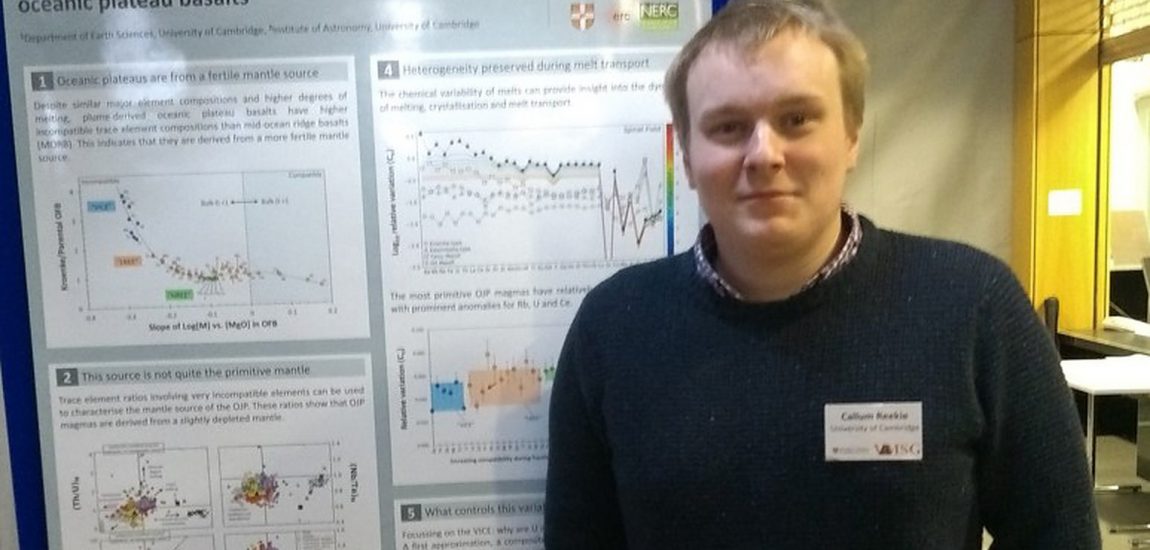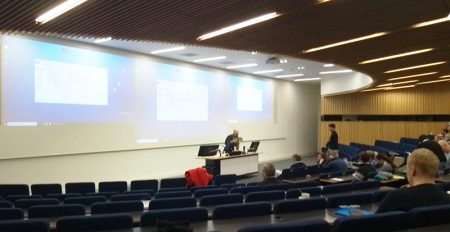
The annual VMSG meeting: a springboard for early career stage volcanologists and igneous geochemists

With financial assistance from the European Association of Geochemistry, I was able to attend the annual Volcanic and Magmatic Studies Group meeting to present the results of my recent research in poster form. The VMSG is a special interest group of the Geological Society of London and Mineralogical Society (GB and Ireland). Each year it hosts a well-attended meeting of predominantly volcanologists and igneous geochemists who come together for 3 days of talks and poster sessions. Given the attendance of most UK- and Ireland-based volcanology/igneous geochemistry-associated scientists, the VSMG meeting provides an important springboard for early career researchers who want to develop their confidence presenting and discussing research results in a friendly, inviting environment.
This year, the VMSG meeting was held in St. Andrews, Scotland, a not-so-warm town on the east coast of Scotland and where I had happened to attend as an undergraduate. The meeting was organised approximately into two equal halves, beginning with volcanology (physical volcanology/volcanic degassing/volcano monitoring) on day one and finishing with igneous geochemistry-related talks and posters (mantle geochemistry/volatile cycling/petrogenetic processes) afterwards. Despite this division in research areas, both groups were well-integrated in terms of discussion and contribution of ideas at the poster sessions. This was particularly beneficial for me because my research combines both igneous geochemistry with processes that affects basaltic melts during eruption (for example, degassing). All the talks received considerable engagement from the audience. This engagement is particularly strengthened by the fact that the researchers are largely familiar with each other, meaning that good scientific discussion flows much easier than at larger conferences.
A particular highlight of this year’s VSMG meeting was the way in which the poster sessions were organised. Unlike larger conferences where poster sessions are held in the evening, this year’s VSMG meeting had poster presentations over lunch. This meant that most attendees were still fresh and open to in-depth discussion. This was particularly important for Masters and early-PhD students who were attending the conference for the first time and presenting the results of what may be their first scientific project. In my personal experience, the level of engagement at the poster session was much more than I have seen at larger conferences. Scheduling poster presentations over lunch also left a greater amount of time for post-talk discussions in the evening, and, more importantly, preparations for the conference cèilidh (a social event with Scottish country dancing and live music)!
Attending the annual VMSG meeting allows you to become more integrated and familiar with the UK and Ireland-based volcanology and igneous geochemistry community. While also allowing academics to maintain close ties with each other, attendance is particularly important for Masters, early-PhD and even final-year undergraduates because it allows you to strengthen your presentation and communication skills in a small, friendly environment. VMSG was the first conference I attended as a final-year undergraduate and it prepared me well for attending the larger EGU conference later on. The social side of the conference is also a major help in getting to know everyone!
About the author
Callum Reekie is an igneous geochemistry research student at the University of Cambridge. Originally from Scotland, he completed his Masters project on exotic magmatic rocks from South Greenland before moving to Cambridge to start his PhD. His research primarily focuses on the chemistry of basaltic melts in plume-type settings and what implications this has for compositional variability in the Earth’s mantle. He is particularly interested in constraining how sulfur behaves in silicate melts because this gives us an important insight into how sulfur-associated elements (e.g., Cu and Ag) are distributed in the Earth’s crust.

